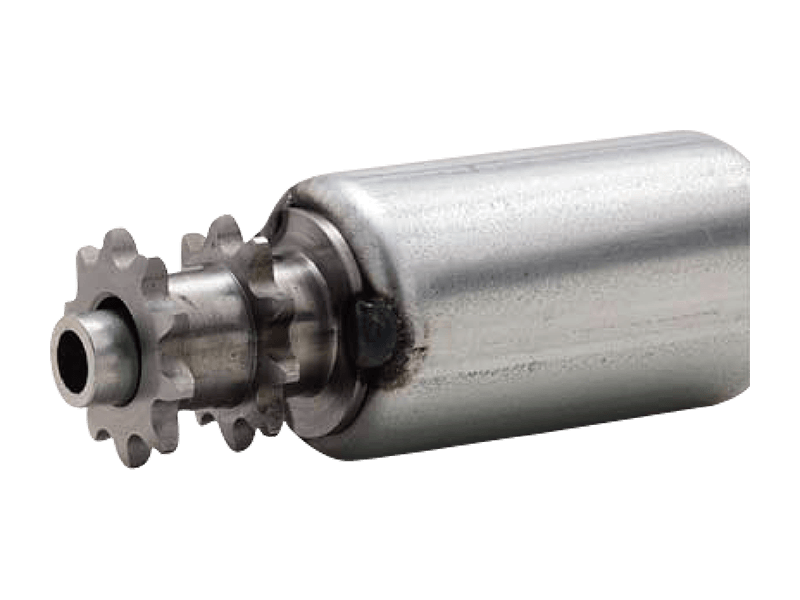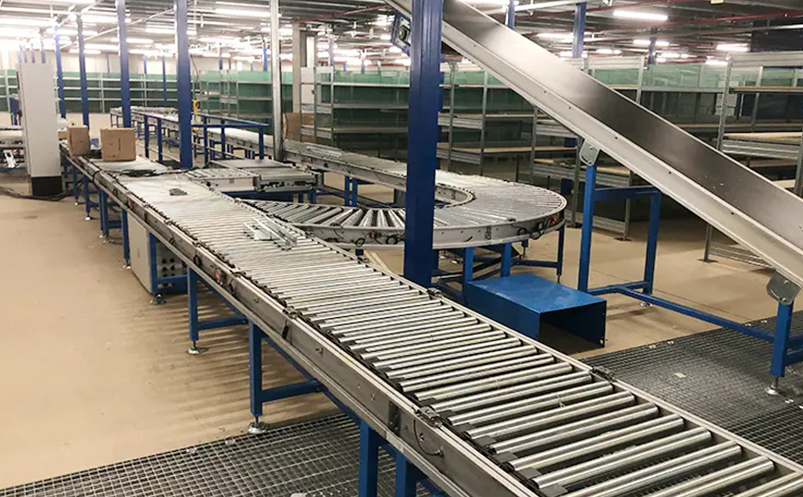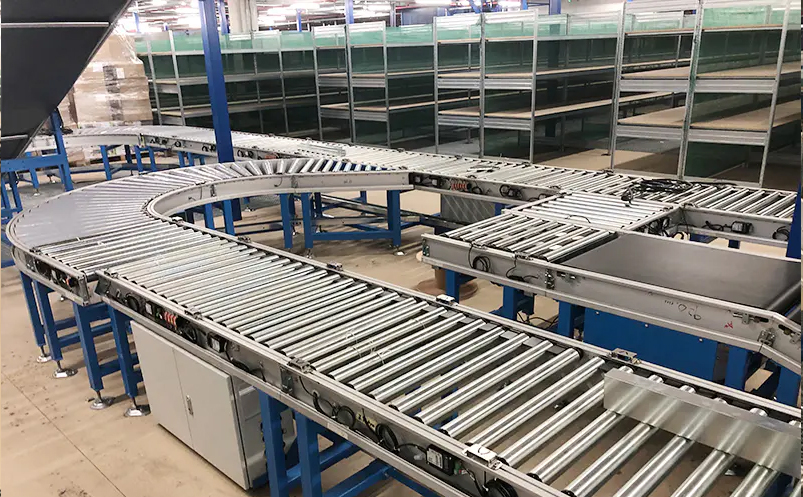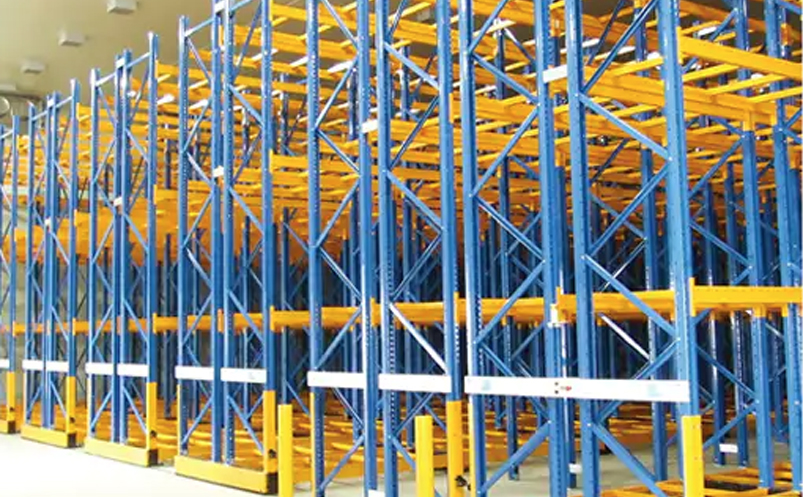Conveyor systems are the backbone of modern material handling operations. From warehouses and manufacturing plants to airports and packaging lines, conveyors ensure that goods move efficiently from one point to another. At the core of many conveyor designs are driven rollers, which actively propel products along the line. Understanding how power is transmitted to these rollers is essential for engineers, maintenance professionals, and anyone involved in designing or operating conveyor systems.
1. The Role of Driven Rollers in Conveyor Systems
In a conveyor system, rollers can be classified into two main types: idler rollers and driven roller. Idler rollers simply support and guide the product, allowing it to move freely, while driven rollers are mechanically powered to actively move items along the belt or roller path. The driven rollers receive energy from an external power source such as an electric motor and convert it into rotational motion, which in turn moves the conveyed material.
Driven roller conveyors are commonly used where precise control of product movement is required. They are especially useful in applications involving accumulation, sorting, packaging, or automated assembly. Because each roller or group of rollers can be independently powered or controlled, these systems allow for flexible material flow and efficient handling of varying product sizes and weights.
2. The Principle of Power Transmission
Power transmission in driven roller conveyors is based on the conversion of electrical or mechanical energy into rotational motion. The energy is transmitted from a motor or drive unit to the rollers through a mechanical linkage. This linkage can take several forms such as chains, belts, gears, or integrated motors. The chosen method depends on the design of the conveyor, the load requirements, and the desired level of control and efficiency.
The main goal of the transmission mechanism is to ensure that rotational energy is distributed evenly to the rollers, providing consistent speed and torque. Proper power transmission ensures that products move smoothly, minimizes wear on components, and reduces the likelihood of slippage or system failure.
3. Common Power Transmission Methods
There are several methods for transmitting power to driven rollers in conveyor systems. Each method has distinct characteristics and advantages suited to specific industrial needs.
3.1 Chain-Driven Roller Conveyors
Chain-driven roller conveyors are among the most durable and widely used types, especially in heavy-duty applications. In this design, power is transmitted from an electric motor to the rollers via a chain and sprocket arrangement.
A drive chain connects the rollers along the length of the conveyor. Each roller has a sprocket attached to one end, and the chain loops around these sprockets. When the motor turns the drive shaft, it moves the chain, causing the rollers to rotate simultaneously. This method ensures positive drive, meaning there is little to no slippage between the rollers and the drive mechanism.
Chain-driven systems are ideal for handling heavy or palletized loads, metal parts, and large containers. They are often used in manufacturing, automotive assembly, and industrial warehousing. However, they do require regular lubrication and maintenance to prevent wear and noise.
3.2 Belt-Driven Roller Conveyors
Belt-driven roller conveyors use a continuous belt as the medium for power transmission. The belt is looped around a drive pulley connected to a motor and passes under or over the rollers. The friction between the belt and the rollers causes the rollers to turn and move the conveyed items.
This system provides smooth and quiet operation, making it suitable for lighter loads and applications where noise reduction is important. It is commonly used in packaging, postal sorting, and assembly lines.
However, because the belt relies on friction, there can be some slippage under heavy loads or when the belt becomes worn. Proper tensioning and alignment are essential to ensure efficient power transmission. The belts can be made of rubber, polyurethane, or other synthetic materials depending on the required durability and environmental conditions.
3.3 Line Shaft Driven Roller Conveyors
Line shaft conveyors are a cost-effective and versatile option for medium-duty applications. In this system, a single rotating shaft runs along the length of the conveyor. Elastic belts or O-rings connect the line shaft to the individual rollers. As the motor drives the line shaft, the belts transfer rotational motion to the rollers.
This configuration allows for easy installation and maintenance, as individual rollers can be replaced without major disassembly. Line shaft systems also enable accumulation zones where products can stop without halting the entire conveyor.
One limitation is that line shaft conveyors are not suitable for very heavy or irregular loads because the friction-based belts can stretch or slip under high torque. Nonetheless, they remain popular for warehouses, distribution centers, and packaging lines.
3.4 Motorized Drive Rollers (MDR)
Motorized drive roller systems represent a more modern and efficient approach to power transmission. In these conveyors, each roller or selected rollers contain a compact electric motor within the roller body. The motor directly drives the roller without the need for external chains or belts.
The main advantage of MDR technology is precision and energy efficiency. Each motorized roller can be independently controlled, allowing for intelligent operation such as variable speed control, start-stop functions, and zone-based accumulation. This modular design also reduces maintenance needs since there are fewer mechanical parts exposed to wear.
MDR conveyors are increasingly used in automated environments where flexibility and energy savings are priorities. They are common in e-commerce fulfillment centers, food handling lines, and smart manufacturing systems.
3.5 Gear Drive Systems
Some conveyors use gearboxes or gear trains to transmit power to the rollers. A motor drives the gearbox, which then distributes power through shafts or couplings to multiple rollers. Gears allow precise torque and speed control and are often used in custom or heavy-duty conveyor designs.
Gear-driven systems offer excellent reliability and load-handling capabilities. However, they can be more complex and expensive to manufacture and maintain compared to belt or chain-driven systems. Proper alignment and lubrication are critical for long service life.

4. Factors Affecting Power Transmission Efficiency
The performance of a driven roller conveyor depends on how efficiently power is transmitted to the rollers. Several factors influence this efficiency.
4.1 Roller Material and Surface Finish
The material and texture of the roller surface affect the frictional contact with belts or products. Steel rollers provide high strength but can generate noise, while rubber-coated rollers improve grip and reduce vibration.
4.2 Tension and Alignment
In belt and chain systems, proper tensioning is crucial to avoid slippage or excessive wear. Misalignment can cause uneven loading on the rollers and premature failure of the transmission components.
4.3 Load Distribution
Unevenly distributed loads place additional stress on certain rollers, causing energy loss and reducing overall system performance. Proper design ensures that loads are evenly supported across the rollers.
4.4 Lubrication and Maintenance
Regular lubrication minimizes friction between moving parts, extending the life of bearings, chains, and shafts. Poor maintenance often leads to increased power consumption and reduced reliability.
4.5 Environmental Conditions
Temperature, humidity, and dust can all influence the efficiency of power transmission. For instance, high temperatures can cause belts to expand or slip, while dust can affect chain performance.
5. Energy and Control Considerations
Modern conveyor systems increasingly integrate energy-efficient technologies and control systems. Variable frequency drives (VFDs) allow precise adjustment of motor speed, ensuring that conveyors run only as fast as needed. In motorized drive roller systems, power consumption is minimized because only active zones are powered, reducing idle energy use.
Automation also plays a key role in optimizing power transmission. Sensors can detect product presence and control the operation of specific rollers or sections. This selective operation prevents unnecessary wear and saves energy.
Additionally, monitoring systems can track motor performance, roller speed, and torque, helping maintenance teams detect potential issues early. These developments make driven roller conveyors not only more efficient but also smarter and more responsive to operational demands.
6. Maintenance and Troubleshooting
Efficient power transmission depends on regular maintenance and timely troubleshooting. Common issues include chain elongation, belt wear, misaligned shafts, and faulty motors.
Routine inspection should include checking chain tension, belt alignment, roller rotation, and bearing condition. Worn belts or stretched chains should be replaced promptly to maintain consistent power delivery. For motorized drive rollers, electrical connections and temperature levels should be periodically checked.
Noise or vibration often indicates imbalance or misalignment in the drive system. Addressing these early prevents major breakdowns and prolongs system lifespan. Preventive maintenance not only enhances reliability but also improves energy efficiency and reduces operating costs.
7. Choosing the Right Drive Method
Selecting the best power transmission method depends on several factors such as product type, load weight, operating speed, environment, and budget.
- For heavy loads or harsh environments, chain-driven systems offer the necessary strength and durability.
- For quiet and clean operations, belt-driven systems provide smooth motion with minimal noise.
- For flexible, automated, or high-precision environments, motorized drive rollers are ideal.
- For economical, medium-duty applications, line shaft conveyors remain a practical solution.
Each method involves trade-offs between cost, complexity, and performance. Engineers often balance these factors based on the specific requirements of the production or logistics process.
8. Conclusion
Power transmission in driven roller conveyors is a critical element that determines the system’s efficiency, reliability, and longevity. Whether through chains, belts, shafts, or integrated motors, the goal remains the same — to deliver consistent and controlled motion that keeps materials flowing smoothly through the production or distribution process.
Understanding how power is transmitted to driven rollers helps operators and designers make informed decisions about system selection, maintenance, and optimization. As industries continue to embrace automation and smart manufacturing, the evolution of power transmission methods will play a central role in improving material handling efficiency, energy conservation, and operational precision.
From traditional chain drives to advanced motorized rollers, each system reflects a balance between mechanical engineering principles and the evolving demands of modern production environments. Mastering these mechanisms ensures that conveyors continue to perform as the quiet yet indispensable workhorses of industrial progress.







